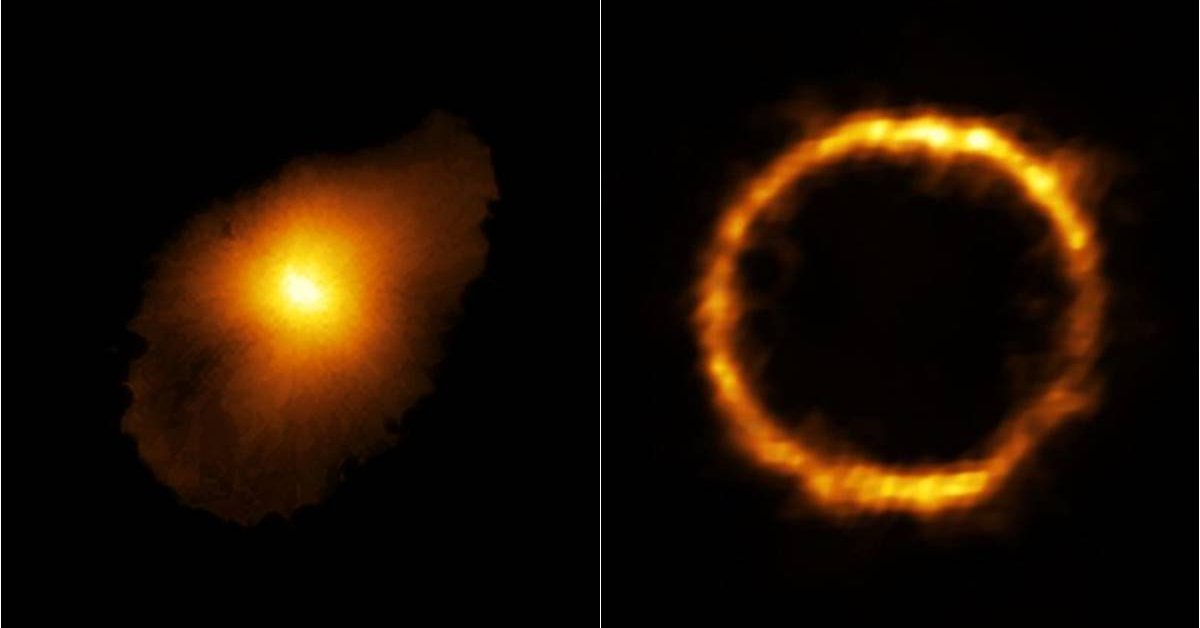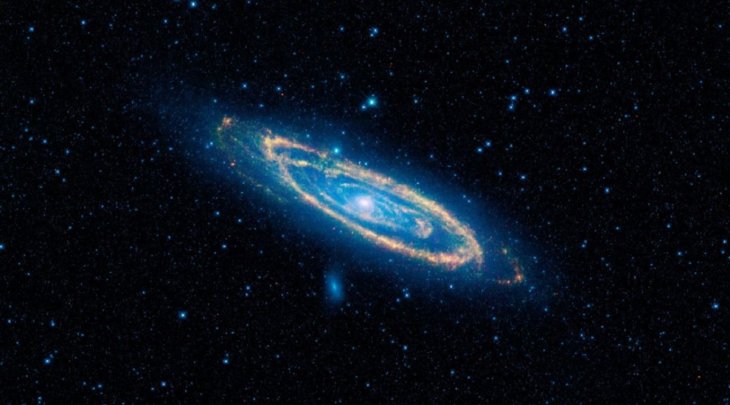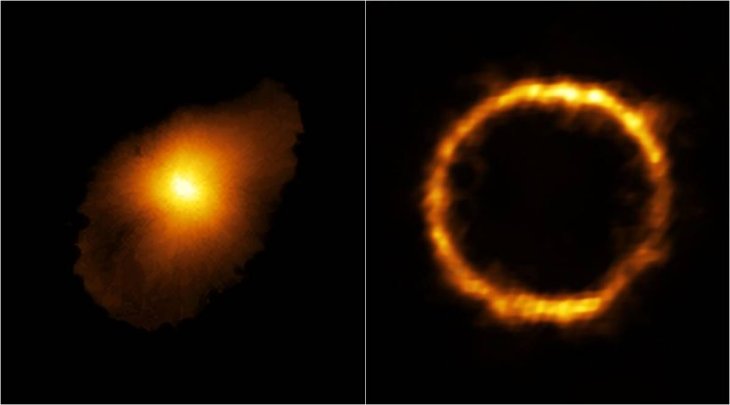New Study Finds A Milky Way-Like Galaxy That Formed 12 Billion Years Ago
Dhir Acharya - Aug 16, 2020

In the new study, astronomers observed SPT0418-47, showing that the young galaxy has similar features with those of the Milky Way.
- The First Space Hotel In The World Will Welcome 400 Guests
- Startup Builds Vehicle With Soviets Tech To Collect Space Garbage
- World's First Space Hotel To Begin Construction In 2025 With Rooms For 400 Guests
A long time ago when space was a young universe, a young galaxy was flaring to life in the deep space. This early universe was often thought of as an extreme, chaotic environment where galaxies are violent and unstable. However, new research suggests a different truth, giving us new insight into the formation of galaxies.
In the new study, astronomers observed SPT0418-47, showing that the young galaxy has similar features with those of the Milky Way. It took 12 billion years for the light from the galaxy to reach us, meaning astronomers are looking at when a galaxy formed only 1.5 billion years after the universe was born.

From previous observations and modeling, astronomers theorized that the period after the birth of the universe was violent. Early galaxies likely smashed to each other, merged into big, disordered masses of stars instead of neat, flat disks. However, SPT0418-47 settle down into flat disks, which is new and opposite to some of the existing beliefs about the early activities of galaxies. Astronomy Ph.D. student and the study’s first author Francesca Rizzo said:
“This result represents a breakthrough in the field of galaxy formation, showing that the structures that we observe in nearby spiral galaxies and in our Milky Way were already in place 12 billion years ago.”
SPT0418-47 is so far away that it is difficult to be located in the sky as its light is faint. To find and determine the characteristic of SPT0418-47, the astronomers relied on gravitational lensing. Essentially, on its way to Earth, light from deep space is influenced by gravity, it’s distorted and reshaped by galaxies as it travels.

However, lensing can help with detection. Along with this technique, the researchers used the ALMA telescope to magnify SPT0418-47’s light and increase the resolution to observe its features. Under the effect of the lensing, ALMA was able to capture images of SPT0418-47 as an aggressive fiery ring, a circle of light that contains hundreds of thousands of stars.
Then, the research team used computer modeling techniques to reconstruct what SPT0418-47 would look like, the result was surprising. Rizzo said:
“When I first saw the reconstructed image of SPT0418-47 I could not believe it. A treasure chest was opening.”
It can be seen in the reconstruction that like the Milky Way, SPT0418-47 has a disc as well as a huge bulge at the center, but it doesn’t have large spiral arms. Astrophysicist Sarah Martell from the University of New South Wales said that it’s more like a miniature of the Milky Way than a lookalike. SPT0418-47 is 25 percent the mass of our galaxy and 50 percent the size, she stated.
Notably, its star formation rate is 350 times that of our suns, compared with the 1.6 rate of the Milky Way, which means it should have been much more disorder. However, SPT0418-47 remains calm and cool despite such high energetic processes.
In 2025, the Extremely Large Telescope of the European Southern Observatory will come online, when astronomers will be able to learn more about such ordered galaxies and hopefully figure out how they might have formed and evolved in the early universe.
>>> India Is Among The Nations With The Most Satellites In The World
Featured Stories

Features - Jul 01, 2025
What Are The Fastest Passenger Vehicles Ever Created?

Features - Jun 25, 2025
Japan Hydrogen Breakthrough: Scientists Crack the Clean Energy Code with...

ICT News - Jun 25, 2025
AI Intimidation Tactics: CEOs Turn Flawed Technology Into Employee Fear Machine

Review - Jun 25, 2025
Windows 11 Problems: Is Microsoft's "Best" OS Actually Getting Worse?

Features - Jun 22, 2025
Telegram Founder Pavel Durov Plans to Split $14 Billion Fortune Among 106 Children

ICT News - Jun 22, 2025
Neuralink Telepathy Chip Enables Quadriplegic Rob Greiner to Control Games with...

Features - Jun 21, 2025
This Over $100 Bottle Has Nothing But Fresh Air Inside

Features - Jun 18, 2025
Best Mobile VPN Apps for Gaming 2025: Complete Guide

Features - Jun 18, 2025
A Math Formula Tells Us How Long Everything Will Live

Features - Jun 16, 2025
Comments
Sort by Newest | Popular